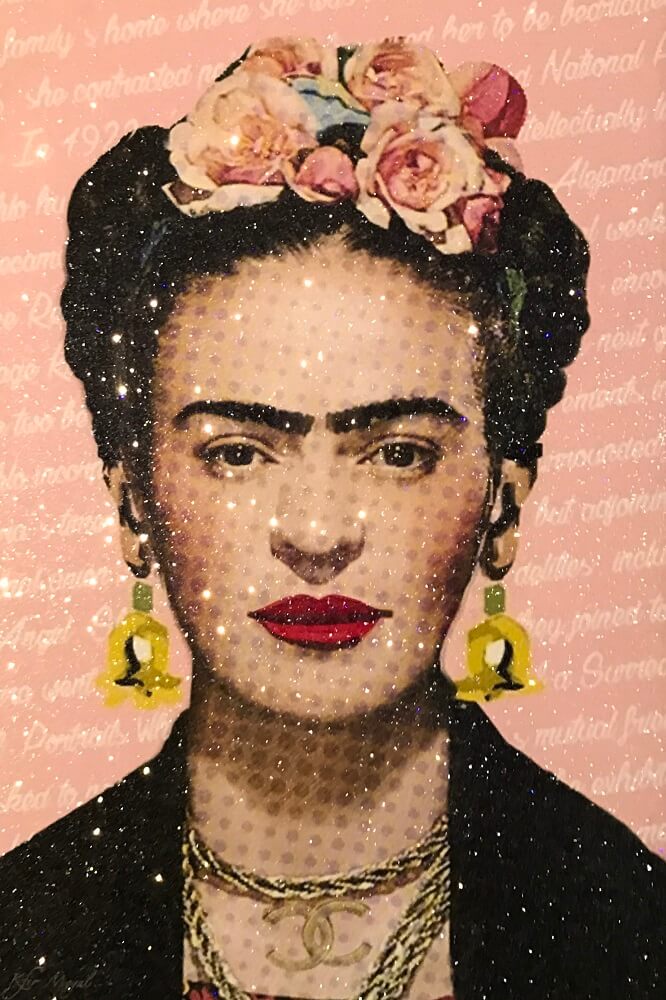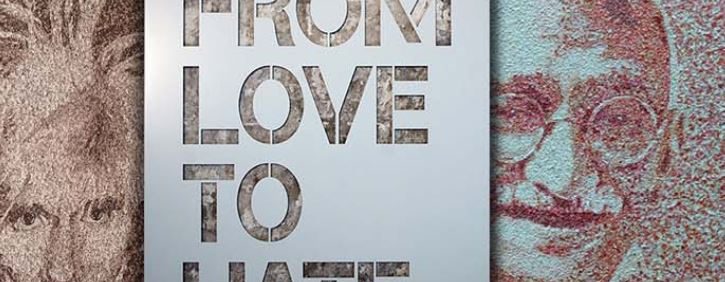There are countless forms of art. When it comes to visual arts, there are generally 3 types: decorative, commercial, and fine art.
The broader definition of “the arts” covers everything from painting through theatre, music, architecture, and more. However, the visual arts are those artistic creations that we can see, like sculptures or paintings.
What Are the Three Types of Visual Art?
The three types of visual arts are:
- Decorative
- Commercial
- Fine art
Subcategories exist in each of these art types, and these art forms can be representational, abstract, or non-objective. Broader visual art forms include art forms such as painting, sculpture, costume or fashion design, drawing, printmaking, ceramics, photography, video, filmmaking, graphic or commercial design, crafts, and architecture.
You may like : Gateways to Art Understanding the Visual Arts 2nd Edition eBook
What Are the Three Art Classifications?
Across all the visual arts, three classifications are used to describe an artwork. Whether the artwork is two-dimensional or three-dimensional, it will always fall under one of these three main types.
Representational Art

Representational art can describe any artwork which depicts easily identifiable or recognizable subjects. Representational or figurative art is the most widely accepted art, recognized by the masses. This group also has the largest body of art available because the other two types, abstract and non-objective, are relatively newer styles.
Most older and classical art falls into the category of representational art. Despite depicting real objects, figurative art is not always hyper-realistic; it does not have to show the subject accurately like a photograph. Examples of representative artists include Leonardo da Vinci, Vincent Van Goh, Michelangelo, Edward Hopper, and Frida Kahlo.
1. Abstract Art

Abstract art takes subjects or inspiration from reality but presents them in ways that are different from how we view the same subjects in our everyday reality. Abstraction is only around 200 years old and still a misunderstood art style, despite growing rapidly in popularity. Examples of abstract artists include Georges Braque, Mark Rothko, Henri Mattise, and Jasper Johns.
Non-objective Art

Non-objective art takes nothing from reality. It may be mistaken for abstraction but differs because there is no basis in reality. Instead, non-objective art uses the elements, materials, and principles of art in a way that creates visually stimulating work. Examples of non-objective artists include Jackson Pollock, Wassily Kandinsky, Piet Mondrian, and Sonia Delaunay.
Fine Art
Fine art is a style of art that is developed primarily to be aesthetically beautiful. This definition distinguishes and elevates fine art above those decorative and commercial arts, which also serve some practical function. High art allows for the full expression and display of an artist’s imagination, unrestricted by any commercial or practical considerations such as functionality.

While the fine arts as a collective can include seven forms of art, the fine visual arts are traditionally limited to three visual arts: painting, sculpture, and architecture. However, broader interpretations of the fine visual arts would expand to include drawing. The drawings of the masters are considered fine art on their own merits, even if they were precursory to paintings or three-dimensional art forms.
The term “fine arts” was used for Western art from the Renaissance periods onwards to distinguish certain art forms from the emerging forms of commercial design or the work of craftspeople.
What distinguishes this art as “fine” is not a comment on the artwork’s quality in question. Instead, the definition relates to the method and the purity of the discipline. Other visual forms of art can be of high quality without being classified as “fine art.”
“Fine art” is predominantly a western term, but other cultures have observed similar distinctions between the “high” and “low” arts. The three fine arts of painting, sculpture, and architecture are sometimes also called the “major arts”, with “minor arts” referring to commercial or decorative art styles.
Architecture is the only form of fine visual art with a sense of utility or elements of practicality. However, not all everyday buildings will fall into the classification of fine architecture. A sense of beauty and creativity must still be at the forefront of the architect’s design.
Renowned fine artists usually enjoy a higher status and notoriety, either during their lives or posthumously, than their commercial and decorative counterparts. Older art, such as classical art from antiquities, will usually be considered fine art. Notable fine artists include the “Old Masters” working between the Renaissance and the 1800s, such as Leonardo da Vinci and Michelangelo.
While many older or classical art pieces will be considered fine art, modern and contemporary art can also fall into this category. From the 1800s, a new class of fine artists emerged within impressionism, expressionism, and other modern art genres. These genres include well-known artists such as Pablo Picasso, Vincent Van Gogh, Jackson Pollock, Claude Monet, and Umberto Boccioni.
Many contemporary fine artists have expanded the fine art definition by taking inspiration or elements from other visual arts. However, the one-of-a-kind, limited nature of their art and unrestrained creative license maintain the elite status of contemporary fine artists. Famous contemporary fine visual artists of the present day include David Kracov, Jeff Koons, Yayoi Kasuma, Barbara Kruger, Damien Hirst, and Ai Wei Wei.
2. Decorative
Decorative arts are often overlooked as art forms because they are both functional and beautiful to look at. Decorative arts may be used interchangeably with “crafts”; the design and manufacture are both beautiful and functional.
The decorative arts include objects made for the interiors of buildings and interior design but do not usually include architecture.
The decorative arts can include everyday items but are distinct from mass-produced versions of these items. To be considered a decorative art, an object should usually be hand-made by a specialized craftsman or craftswoman.

Common mediums of decorative art include ceramics, glassware, woodwork, textiles, enamelwork, and metalwork. Each of these mediums can consist of multiple subcategories; for example, the textile medium includes everything from fashion design to wall tapestry, basketry, embroidery, and interior fabrics.

The decorative arts can be found in cultures all around the world. Some of the most renowned decorative artists include textile designer William Morris, jewelry, and ceramic maker Peter Carl Fabergé (creator of the infamous Fabergé eggs). Decorative artists are often unknown compared to their counterparts in painting or sculpture. Still, their work is just as important in telling the history and stories of cultures past and present.
3. Commercial
Commercial art, like decorative arts, can be both functional and beautiful. Commercial art is a creative service, which is created for commercial purposes, such as advertising. Commercial art is used to promote the sale and interest of services, products, and ideas. Brands and businesses will commission commercial art to communicate something specific to an audience.

The commercial arts can include graphic design, photography, illustration, animation, printmaking, television, fashion design, visual effects, industrial design, and motion graphics. Commercial art is commonly seen in mediums such as magazines, websites, apps, television, store displays, and product packaging.
This form of art is all around us. Commercial artists are often responsible for the visuals we see every day, from logos to billboards, TV adverts, and more. It’s an art that’s mass-produced and designed to appeal to broad audiences.
Commercial art is often seen in new forms of media, but it has, in fact, been around for centuries to promote products. This art form is employed not just by brands and businesses but as a form of communication for governments and the military. Famous war recruitment posters, government propaganda, and even public works projects were all designed by commercial artists. London’s iconic Tube logo, Coca-Cola’s early posters, and Andy Warhol’s Campbell’s soup posters are all fantastic examples of commercial art.
Commercial artists are either hired or commissioned to create art for paying clients. Unlike fine artists, commercial artists usually follow a brief but can still have enough creative freedom or flair to create commercial art that is experimental or groundbreaking.
Many innovative artists who became popular during the Art Nouveau, Art Deco, and Pop Art movements were commercial artists. Famous commercial artists include Andy Warhol, Norman Rockwell, Alphonse Mucha, Takashi Murakami, and Salvador Dali.
Some artists have begun their careers in commercial art then crossed over to fine art, or vice versa. These artists are often responsible for blurring the line between high and low arts and challenging exclusivity notions that often come with the fine arts. Andy Warhol created art for brands like Campbell’s Soup and Brillo before becoming the renowned artist he is remembered as today.

Contemporary artists like Takashi Murakami blur the lines further by producing fine art that uses the styles and motifs of “low” commercial arts like anime. Murakami exhibits and creates both fine art and mass-produced commercial art, often in collaboration with brands like Louis Vuitton and performers such as Kanye West and Billie Eilish.
Conclusion
In the present day, the term “visual arts” is used to include both fine art, commercial art, and the applied decorative arts and crafts. However, this was not always the case. Until the 20th century, the term ‘artist’ was often reserved and restricted to artists working within the fine arts.
Artists specializing in handicraft, craft, commercial, or applied art media were often overlooked. Nowadays, there is a much wider appreciation of artists’ skill and talent across all visual arts forms.


